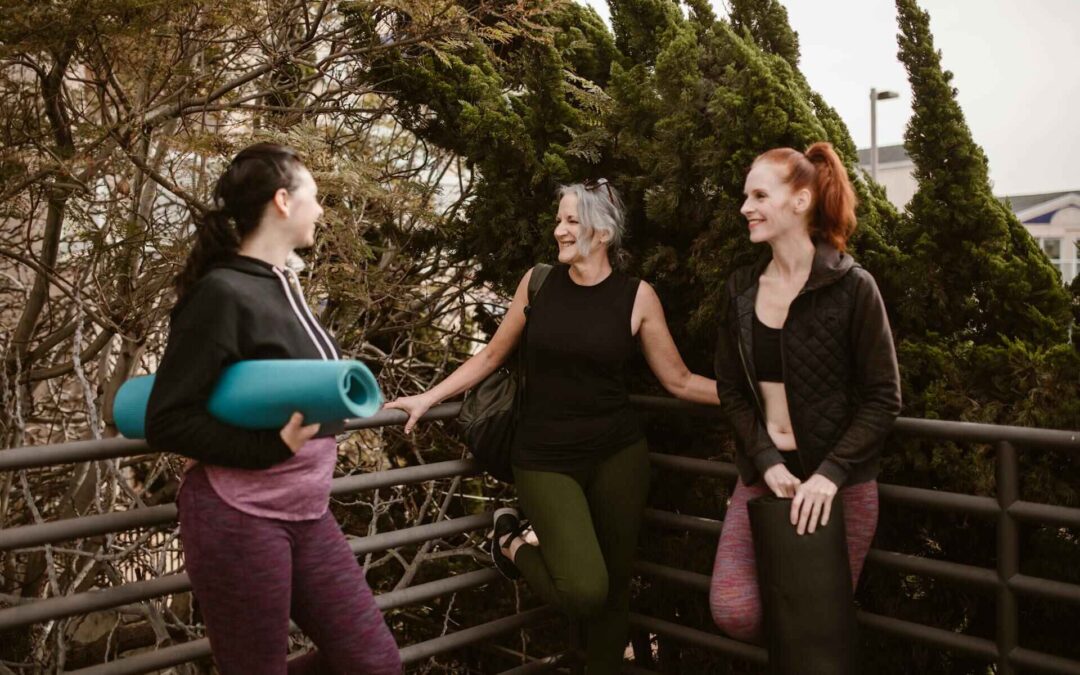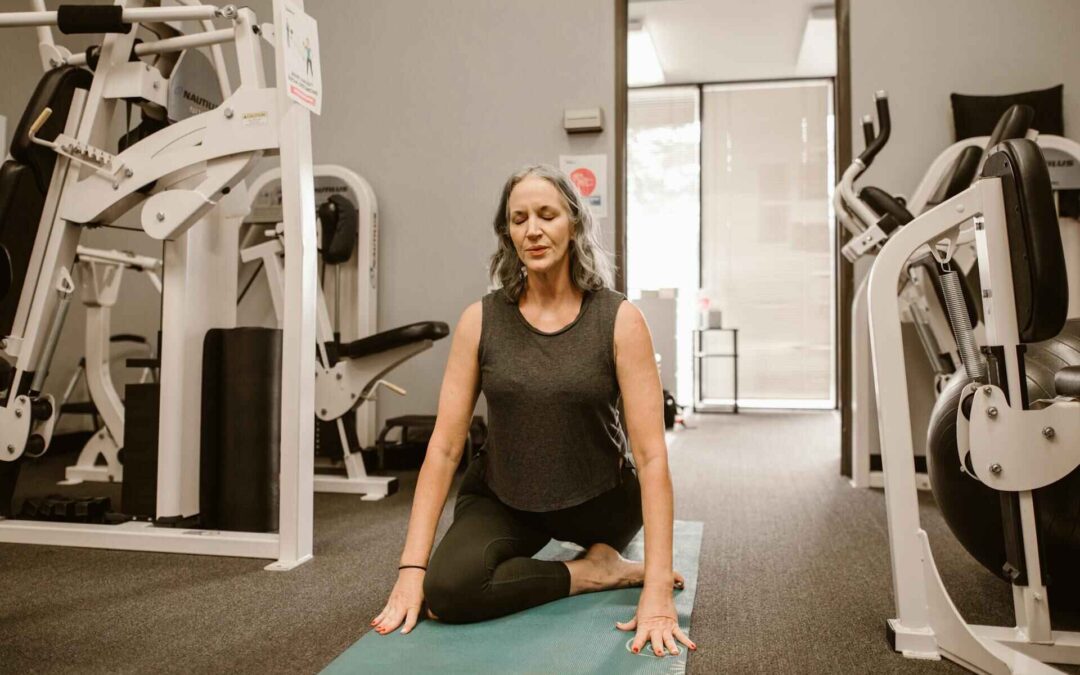As we age, our bodies change in ways that can make maintaining a healthy weight and staying energized more challenging. For women over 50, this is especially true, thanks to hormonal shifts, slower metabolism, and other factors that can feel like an uphill battle. But here’s some good news: a low carb diet might just be the game-changer you need to feel your best and shed those stubborn pounds.
In this guide, we’ll explore everything you need to know about the low carb diet for women over 50—from understanding how it works to crafting meal plans, tackling common challenges, and much more.
What is a Low Carb Diet?
A low carb diet is a way of eating that limits your intake of carbohydrates, focusing instead on proteins, healthy fats, and non-starchy vegetables. Unlike traditional diets that emphasize calorie counting, a low carb diet shifts your body into fat-burning mode by reducing the amount of glucose available for energy. (1)
Types of Low Carb Diets
- Ketogenic Diet (Keto): Extremely low in carbs (usually under 20 grams per day), high in fat, and moderate in protein.
- Atkins Diet: Starts with very low carbs and gradually increases carb intake over time.
- Paleo Diet: Focuses on whole, unprocessed foods with moderate carb intake from fruits and vegetables.
How Does It Work?
When you reduce carbs, your body uses fat as its primary fuel source instead of glucose. This metabolic state, known as ketosis, not only helps you burn fat but also stabilizes blood sugar levels, which is crucial for women over 50 who may be experiencing insulin resistance.
Why Women Over 50 Need a Tailored Approach
If you’ve reached the milestone of 50, you might have noticed that your body doesn’t respond to diet and exercise the way it once did. Losing weight becomes harder, energy levels dip, and maintaining overall health feels like an uphill battle. But it’s not just your imagination—there are physiological reasons behind these changes. That’s why a low carb diet for women over 50 isn’t a one-size-fits-all solution. It requires a tailored approach to meet the unique needs of your body during this phase of life. (2)
Let’s explore why women over 50 need a customized plan and how a low carb lifestyle can address those specific challenges.
Hormonal Changes After Menopause
One of the most significant shifts for women over 50 is the hormonal changes brought on by menopause. Estrogen and progesterone, the two key hormones that regulate many bodily functions, start to decline during this stage. (3)
How Hormonal Changes Affect Weight and Energy
- Weight Gain: As estrogen levels drop, the body tends to store more fat around the abdomen. This is often referred to as “menopause belly.”
- Slower Metabolism: Reduced estrogen also means a slower metabolic rate, making it harder to burn calories.
- Decreased Energy: Hormonal fluctuations can lead to fatigue and a general feeling of lethargy.
A low carb diet can help manage these changes by stabilizing blood sugar levels and reducing insulin resistance, which is common during and after menopause. By keeping insulin in check, you can minimize fat storage and support a healthier metabolism.
Slower Metabolism and Muscle Loss
As we age, our metabolism naturally slows down, and we start to lose muscle mass—a condition known as sarcopenia. Muscle is more metabolically active than fat, meaning it burns more calories even when you’re at rest. When muscle mass declines, so does your resting metabolic rate, leading to weight gain even if your diet hasn’t changed.
Why a Low Carb Diet Helps
- Promotes Fat Burning: By reducing carbs, your body shifts to burning fat for fuel, which can help counteract the slower metabolism.
- Preserve Muscle Mass: A low carb diet that includes adequate protein supports muscle maintenance, especially when combined with strength training.
- Boosts Metabolic Rate: The fat-burning state of ketosis can help increase your metabolic rate, even when it naturally slows with age.
Increased Risk of Insulin Resistance
Insulin resistance becomes more common as we age, particularly in women going through menopause. This condition occurs when your body’s cells stop responding efficiently to insulin, leading to elevated blood sugar levels. Over time, insulin resistance can lead to type 2 diabetes, weight gain, and increased risk of cardiovascular disease.
The Role of a Low Carb Diet in Managing Insulin Resistance
- Stabilizes Blood Sugar: A low carb diet minimizes the spikes and crashes in blood sugar levels, keeping them more stable throughout the day.
- Reduces Insulin Levels: By lowering carb intake, your body requires less insulin, reducing the risk of insulin resistance.
- Improves Insulin Sensitivity: With consistent low-carb eating, many women see improved insulin sensitivity, which helps with weight loss and overall metabolic health.
Nutrient Needs Change with Age
As you age, your body’s nutrient needs shift. You require more of certain vitamins and minerals, like calcium and vitamin D, to maintain bone health, while your caloric needs decrease due to a slower metabolism. A low carb diet can address these needs if it’s done thoughtfully.
Key Nutrients to Focus On
- Calcium and Vitamin D: Essential for bone health to prevent osteoporosis, a common concern for women over 50.
- Magnesium: Supports muscle function, heart health, and energy production.
- Omega-3 Fatty Acids: Help reduce inflammation, support brain health, and lower the risk of heart disease.
- Fiber: While low-carb diets often reduce fiber intake, it’s important to include fiber-rich, low-carb vegetables like spinach, broccoli, and avocados to support digestive health and prevent constipation.
Mental and Emotional Well-Being
The hormonal shifts of menopause can also affect mental health, leading to mood swings, anxiety, and even depression. Many women find that these emotional changes can derail their efforts to maintain a healthy lifestyle.
How a Low Carb Diet Can Support Mental Health
- Reduces Brain Fog: Stabilized blood sugar levels lead to fewer energy crashes, which can improve focus and mental clarity.
- Supports Mood: Foods rich in healthy fats, like avocados and salmon, support brain health and may help regulate mood.
- Encourages Better Sleep: A balanced low carb diet that includes magnesium and other essential nutrients can improve sleep quality, which is crucial for emotional well-being.
Importance of Personalization
Every woman’s body is different, especially after 50. What works for one person may not work for another. That’s why it’s essential to personalize your low carb diet based on your unique needs, lifestyle, and health conditions.
Steps to Tailor Your Low Carb Diet
- Consult with a Healthcare Professional: Get a health checkup to understand your current health status and nutritional needs.
- Adjust Macros Based on Activity Levels: If you’re more active, you may need slightly more carbs, while a sedentary lifestyle might require fewer.
- Track Your Progress: Use a journal or app to track how your body responds to the diet, including weight loss, energy levels, and mood.
- Listen to Your Body: If something isn’t working—like persistent fatigue or digestive issues—adjust your diet accordingly.
Getting Started with a Low Carb Diet
Set Realistic Goals
Start by setting achievable goals. Instead of focusing solely on the scale, pay attention to how you feel—your energy levels, mental clarity, and even how your clothes fit.
Calculate Your Macros
For women over 50, a good starting point is:
- 20-30% carbs (from non-starchy vegetables and low-glycemic fruits)
- 30-40% protein (from lean meats, eggs, and plant-based sources)
- 30-40% healthy fats (like avocado, olive oil, and nuts)
Create a Low Carb Shopping List
Here’s a simple list to get you started:
- Proteins: Chicken, turkey, salmon, eggs, tofu
- Fats: Avocado, olive oil, coconut oil, nuts
- Vegetables: Spinach, kale, broccoli, zucchini
- Low-Glycemic Fruits: Berries, cherries, kiwi
Meal Planning for Success
When it comes to adopting a low carb diet for women over 50, meal planning can be the secret sauce that sets you up for long-term success. Without a clear plan, it’s easy to fall into old habits or grab convenience foods that sabotage your progress. But with a little preparation, you can stay on track, enjoy delicious meals, and meet your health goals.
Meal planning doesn’t have to be complicated or time-consuming. It can make your life easier by taking the guesswork out of what to eat and ensuring you always have healthy, low-carb options available. Let’s dive into how to create a meal plan that supports your weight loss, energy levels, and overall health.
1. Benefits of Meal Planning for Women Over 50
Before we get into the nitty-gritty, let’s talk about why meal planning is so important, especially for women over 50.
1.1. Helps You Stay Consistent
Consistency is key when it comes to weight loss and healthy eating. A well-thought-out meal plan ensures that you have low-carb, nutrient-dense foods readily available, making it easier to stick to your diet without feeling deprived.
1.2. Saves Time and Reduces Stress
Instead of scrambling to figure out what to eat every day, you’ll have a clear roadmap. This not only saves time but also reduces decision fatigue, a common issue that can lead to poor food choices.
1.3. Supports Better Nutrition
Planning meals allows you to focus on nutrient-dense foods that support healthy aging. You can ensure you’re getting enough protein, healthy fats, and essential vitamins and minerals like calcium, magnesium, and vitamin D.
2. How to Create a Low Carb Meal Plan
2.1. Step 1: Set Your Goals
Before you start planning, it’s important to define your goals. Are you focused on weight loss, boosting energy, or improving overall health? Your goals will influence the types of meals and portion sizes you include.
2.2. Step 2: Determine Your Macros
For a successful low carb diet, it’s essential to balance your macronutrients (carbs, proteins, and fats). While the exact ratio can vary, a good starting point for women over 50 is:
- Carbohydrates: 20-30% of daily calories (focus on non-starchy vegetables and low-glycemic fruits like berries).
- Protein: 30-40% of daily calories (from sources like chicken, fish, eggs, and plant-based proteins).
- Fats: 30-40% of daily calories (from healthy fats like avocado, olive oil, nuts, and seeds).
2.3. Step 3: Plan Your Meals for the Week
Now that you have your goals and macros in mind, it’s time to plan your meals. Aim for a mix of easy-to-prepare recipes and batch-cooked meals that you can reheat throughout the week.
3. Sample 7-Day Low Carb Meal Plan
Here’s a simple 7-day low carb meal plan designed to keep you satisfied, energized, and on track with your health goals.
Day 1
- Breakfast: Scrambled eggs with spinach and avocado
- Lunch: Grilled chicken salad with olive oil and lemon dressing
- Snack: A handful of almonds or walnuts
- Dinner: Baked salmon with roasted asparagus and a side of sautéed kale
Day 2
- Breakfast: Greek yogurt (unsweetened) with chia seeds and a handful of berries
- Lunch: Zucchini noodles (zoodles) with pesto and grilled shrimp
- Snack: Celery sticks with almond butter
- Dinner: Stir-fried tofu with broccoli, mushrooms, and sesame oil
Day 3
- Breakfast: Omelet with bell peppers, onions, and feta cheese
- Lunch: Turkey lettuce wraps with cucumber slices and hummus
- Snack: Hard-boiled eggs
- Dinner: Grilled chicken thighs with a cucumber-tomato salad and olive oil drizzle
Day 4
- Breakfast: Smoothie with unsweetened almond milk, spinach, protein powder, and avocado
- Lunch: Cobb salad with turkey, eggs, avocado, and blue cheese
- Snack: A handful of macadamia nuts
- Dinner: Grilled pork chops with cauliflower mash and green beans
Day 5
- Breakfast: Cottage cheese with sliced cucumber and a sprinkle of black pepper
- Lunch: Roasted vegetable soup with chicken breast
- Snack: Cheese sticks or a small piece of dark chocolate (70% cocoa or higher)
- Dinner: Pan-seared tilapia with sautéed spinach and a lemon-butter sauce
Day 6
- Breakfast: Scrambled tofu with turmeric, spinach, and mushrooms
- Lunch: Grilled steak salad with arugula, avocado, and cherry tomatoes
- Snack: Handful of pumpkin seeds
- Dinner: Roasted chicken with Brussels sprouts and a side of mixed greens
Day 7
- Breakfast: Egg muffins with broccoli, cheddar, and turkey sausage
- Lunch: Tuna salad with avocado and cucumber slices
- Snack: A slice of cheese with a few olives
- Dinner: Beef stir-fry with bok choy, bell peppers, and coconut aminos
4. Meal Prep Tips for Busy Women
Meal prep doesn’t have to take all day. Here are some simple tips to make it manageable:
4.1. Batch Cook Your Proteins
Cook large batches of proteins like chicken, beef, or tofu at the beginning of the week. Store them in airtight containers in the fridge, and use them in salads, stir-fries, or wraps.
4.2. Pre-Cut Vegetables
Save time by washing and chopping vegetables in advance. Store them in containers or zip-top bags, so they’re ready to toss into a pan or salad.
4.3. Use Freezer-Friendly Recipes
Double your favorite low carb recipes and freeze half for later. Soups, stews, and casseroles freeze particularly well and can be lifesavers on busy days.
4.4. Keep Healthy Snacks on Hand
Prevent mindless snacking by keeping low carb snacks within reach. Nuts, cheese, hard-boiled eggs, and sliced veggies with hummus are all great options.
Overcoming Common Challenges
Dealing with Carb Cravings
ravings can be tough, especially in the beginning. Here are some tips to curb them:
- Stay hydrated—sometimes thirst can be mistaken for hunger.
- Keep healthy snacks on hand, like nuts or cheese.
- Distract yourself with a walk, hobby, or quick workout.
Managing Energy Fluctuations
Some women may experience low energy when first starting a low carb diet. To counter this:
- Increase your intake of electrolytes by adding a pinch of sea salt to your water.
- Ensure you’re eating enough healthy fats to keep you satiated and energized.
Exercise: The Perfect Partner to Your Diet
While diet plays a crucial role in weight management and overall health, exercise is the perfect partner that amplifies the benefits of a low carb diet for women over 50. Together, they form a powerful duo that not only helps with weight loss but also improves energy levels, muscle tone, and mental well-being.
As we age, maintaining an active lifestyle becomes even more critical. Regular physical activity helps counteract the natural decline in muscle mass, bone density, and metabolic rate that comes with age. When combined with a low carb lifestyle, exercise can help you achieve sustainable weight loss, boost your metabolism, and enhance your overall quality of life.
Let’s explore why exercise is essential, the best types of workouts for women over 50, and how to create a fitness routine that complements your dietary efforts.
Why Exercise is Crucial for Women Over 50
Exercise isn’t just about burning calories. For women over 50, it provides a wide range of benefits that are especially important during this stage of life.
Maintains Muscle Mass and Prevents Sarcopenia
Sarcopenia, or age-related muscle loss, starts to become a concern after 50. Since muscle burns more calories than fat, losing muscle can slow down your metabolism and make it harder to lose weight.
- How Exercise Helps: Strength training exercises, like lifting weights or using resistance bands, help preserve and even build muscle mass, keeping your metabolism active and supporting long-term weight management.
Improves Bone Density
As estrogen levels drop during menopause, bone density decreases, increasing the risk of osteoporosis and fractures.
- How Exercise Helps: Weight-bearing exercises, such as walking, hiking, or dancing, stimulate bone growth and help maintain bone density, reducing the risk of fractures.
Boosts Metabolism
A low carb diet helps shift your body into fat-burning mode, but exercise further boosts your metabolism by increasing muscle mass and enhancing the efficiency of your metabolic processes.
Enhances Cardiovascular Health
Heart disease is a leading concern for women over 50, especially after menopause. (4)
- How Exercise Helps: Regular cardiovascular exercise, such as brisk walking, cycling, or swimming, improves heart health, lowers blood pressure, and reduces the risk of cardiovascular diseases.
Supports Mental and Emotional Health
Exercise is a natural mood booster. It releases endorphins, which are feel-good hormones that can help alleviate stress, anxiety, and depression.
- How Exercise Helps: Activities like yoga, Pilates, or even a nature walk can improve mood, enhance focus, and promote better sleep, all of which are crucial for overall well-being.
Best Types of Exercise for Women Over 50
Not all exercises are created equal, and as you age, it’s important to choose activities that are effective yet gentle on your joints. A balanced fitness routine should include a mix of strength training, cardiovascular exercise, flexibility, and balance work.
Strength Training
Building and maintaining muscle is critical after 50, and strength training is the best way to do it.
- Benefits:
- Increases muscle mass and strength.
- Boosts metabolism, even at rest.
- Enhances bone density.
- Examples:
- Bodyweight exercises: Squats, lunges, push-ups.
- Resistance bands or free weights: Bicep curls, tricep extensions, shoulder presses.
- Machines at the gym: Leg press, chest press, seated row.
Tip: Aim for 2-3 strength training sessions per week, targeting all major muscle groups.
Cardiovascular (Cardio) Exercise
Cardio helps improve heart health, burn calories, and increase endurance.
- Benefits:
- Enhances cardiovascular fitness.
- Aids in fat loss when combined with a low carb diet.
- Improves stamina and energy levels.
- Low-Impact Cardio Examples:
- Brisk walking (outdoors or on a treadmill).
- Cycling (stationary or outdoor).
- Swimming or water aerobics.
- Dancing or aerobics classes are designed for seniors.
Tip: Aim for 150 minutes of moderate-intensity cardio per week, or 30 minutes on most days.
Flexibility and Stretching
Flexibility tends to decline with age, leading to stiffness and increased risk of injury. Incorporating stretching exercises can help maintain joint mobility and reduce muscle tightness.
- Benefits:
- Improves range of motion.
- Reduces the risk of injury.
- Enhances posture and balance.
- Examples:
- Yoga: Focuses on flexibility, balance, and breathing.
- Pilates: Strengthens core muscles while improving flexibility.
- Simple stretches: Hamstring stretch, calf stretch, shoulder rolls.
Tip: Stretch for 10-15 minutes after each workout or dedicate a full session to flexibility exercises once a week.
Balance and Core Work
Falls are a common concern for women over 50, and balance exercises can help reduce this risk by improving stability and core strength.
- Benefits:
- Enhances stability and coordination.
- Reduces the risk of falls and injuries.
- Strengthens core muscles, which support posture and spinal health.
- Examples:
- Balance exercises: Standing on one leg, heel-to-toe walk.
- Core exercises: Planks, bird-dog, seated leg lifts.
- Tai Chi: A gentle martial art that improves balance and coordination.
Tip: Incorporate balance exercises into your routine 2-3 times per week.
Creating a Balanced Exercise Routine
A well-rounded exercise routine combines strength, cardio, flexibility, and balance to support overall health and complement your low carb diet. Here’s a sample weekly plan:
| Day | Workout |
|---|---|
| Monday | Strength training (upper body) + 15 min walk |
| Tuesday | 30-minute brisk walk + stretching |
| Wednesday | Strength training (lower body) + yoga session |
| Thursday | Cardio (cycling or swimming) |
| Friday | Strength training (full body) + core work |
| Saturday | Balance exercises + 30-minute nature walk |
| Sunday | Rest day or gentle stretching |
Monitoring Your Progress
Tracking your progress is key to staying motivated.
Ways to Track
- Weight and Body Measurements: Use a journal or app to track changes.
- Energy Levels: Keep a daily log of how you feel.
- Photos: Sometimes the scale doesn’t reflect your progress—photos can be a great motivator.
Health Considerations: Prioritizing Wellness on a Low Carb Diet for Women Over 50
A low carb diet for women over 50 can be incredibly effective for weight loss, boosting energy, and improving overall health. However, every woman’s body is unique, especially during this stage of life, when factors like hormonal shifts, slower metabolism, and pre-existing health conditions come into play.
Adopting a low carb lifestyle requires thoughtful planning to ensure that it supports your overall wellness rather than causing unintended issues. In this section, we’ll explore the key health considerations you should keep in mind, from consulting with healthcare professionals to managing chronic conditions, and ensuring you meet your nutritional needs.
1. Consult Your Healthcare Provider
Before making significant changes to your diet, it’s crucial to consult with a healthcare professional. This is especially important for women over 50, as hormonal changes, medications, and chronic health conditions can impact how your body responds to a low carb diet.
Why Consultation is Important
- Monitor Pre-Existing Conditions: If you have diabetes, hypertension, or thyroid issues, a low carb diet can affect your medication and blood sugar levels.
- Adjust Medications: Some medications may need to be adjusted as your body adapts to lower carbohydrate intake.
- Personalized Guidance: Your doctor or a registered dietitian can provide tailored advice based on your health history, current condition, and dietary needs.
Questions to Ask Your Doctor
- Is a low carb diet appropriate for my current health status?
- Will I need to adjust any medications or supplements?
- Are there specific nutrients I should focus on or avoid?
- How often should I monitor my blood sugar, blood pressure, or cholesterol levels?
2. Managing Chronic Conditions
Many women over 50 face chronic conditions that can influence their dietary choices. While a low carb diet can offer benefits, such as improved blood sugar control and weight loss, it’s essential to manage these conditions carefully.
2.1. Diabetes
Insulin resistance and type 2 diabetes are common in women over 50, particularly after menopause.
- Benefits of Low Carb:
- Helps stabilize blood sugar levels by reducing glucose spikes.
- Improves insulin sensitivity, making it easier to manage diabetes.
- Considerations:
- Monitor blood sugar levels closely, especially during the first few weeks of the diet.
- Work with your healthcare provider to adjust insulin or oral medications as needed.
2.2. Hypertension (High Blood Pressure)
As women age, the risk of hypertension increases, particularly after the protective effects of estrogen decline.
- Benefits of Low Carb:
- May lower blood pressure by reducing water retention and improving vascular health.
- Promotes weight loss, which can have a positive effect on blood pressure.
- Considerations:
- Monitor your blood pressure regularly to ensure it remains within a healthy range.
- Increase your intake of potassium-rich, low-carb foods like spinach, avocado, and salmon, as potassium helps balance sodium levels.
2.3. Thyroid Health
Hypothyroidism, or an underactive thyroid, is more common in women over 50 and can affect metabolism, energy levels, and weight.
- Benefits of Low Carb:
- May help manage weight gain associated with hypothyroidism.
- Reduces inflammation, which can support overall thyroid health.
- Considerations:
- Avoid extremely low-carb or ketogenic diets, as they may further slow metabolism in individuals with hypothyroidism.
- Ensure adequate iodine intake from sources like seaweed or iodized salt, as iodine is essential for thyroid function.
3. Nutritional Needs for Women Over 50
As you age, your body’s nutritional needs change. While a low carb diet can help with weight management, it’s important to ensure you’re still meeting your daily requirements for essential vitamins, minerals, and macronutrients.
3.1. Calcium and Vitamin D for Bone Health
Bone density declines after menopause, increasing the risk of osteoporosis.
- Sources of Calcium:
- Dairy products like cheese and yogurt (opt for low-carb options).
- Leafy greens such as kale, spinach, and broccoli.
- Almonds and chia seeds.
- Sources of Vitamin D:
- Fatty fish like salmon, mackerel, and sardines.
- Egg yolks.
- Fortified dairy products or supplements.
Tip: Get your vitamin D levels checked regularly, as many women over 50 are deficient.
3.2. Protein for Muscle Maintenance
Muscle loss accelerates after 50, which can slow metabolism and reduce strength. Consuming adequate protein is essential for maintaining muscle mass.
- High-Protein, Low-Carb Foods:
- Chicken, turkey, and lean beef.
- Fish and seafood.
- Eggs and egg whites.
- Plant-based options like tofu, tempeh, and edamame.
Tip: Aim for 1.0-1.2 grams of protein per kilogram of body weight daily to support muscle maintenance.
3.3. Healthy Fats for Hormonal Balance
Healthy fats play a critical role in hormone production, brain health, and overall energy levels.
- Sources of Healthy Fats:
- Avocado and avocado oil.
- Olive oil and olives.
- Nuts and seeds (e.g., almonds, walnuts, chia seeds).
- Fatty fish like salmon and mackerel.
Tip: Incorporate a variety of healthy fats into your meals to keep you feeling full and satisfied.
4. Hydration and Electrolyte Balance
When transitioning to a low carb diet, your body may lose water and electrolytes, which can lead to symptoms like fatigue, dizziness, and muscle cramps (often referred to as the “keto flu“).
How to Stay Hydrated and Balanced
- Drink Plenty of Water: Aim for at least 8-10 cups of water per day.
- Include Electrolyte-Rich Foods:
- Potassium: Avocado, spinach, and mushrooms.
- Magnesium: Almonds, pumpkin seeds, and leafy greens.
- Sodium: Add a pinch of sea salt to your meals if needed.
Tip: Consider using an electrolyte supplement during the first few weeks of your low carb journey.
5. Signs You May Need to Adjust Your Diet
Your body is constantly giving you feedback. If something doesn’t feel right, it may be a sign that your diet needs adjustment.
Signs to Watch For:
- Persistent Fatigue: You may need to increase your carbohydrate or calorie intake.
- Digestive Issues: Ensure you’re consuming enough fiber from low-carb vegetables.
- Hair Loss or Skin Changes: This could indicate a nutrient deficiency, such as low zinc or biotin.
- Muscle Cramps: Increase your intake of magnesium and potassium-rich foods.
Success Stories: Real-Life Transformations with a Low Carb Diet for Women Over 50
Hearing about the experiences of others can be incredibly motivating, especially when you’re considering a significant lifestyle change like adopting a low carb diet for women over 50. Success stories offer inspiration, practical insights, and proof that it’s possible to overcome the challenges of weight loss, low energy, and age-related health issues—even in your 50s and beyond.
These real-life transformations highlight how women have regained their energy, shed stubborn pounds, improved their overall health, and embraced a new way of living through a low carb lifestyle. Let’s dive into some inspiring success stories and learn what helped these women achieve their goals.
Sarah’s Story: Losing 25 Pounds and Gaining Energy

Age: 54
Starting Point: Struggling with weight gain after menopause and constant fatigue.
Challenge: Sarah had tried numerous diets in the past but found it increasingly difficult to lose weight after turning 50. The hormonal changes of menopause left her feeling sluggish and demotivated.
Her Low Carb Journey
Sarah started with a goal of reducing her daily carbohydrate intake to around 50 grams while focusing on whole, nutrient-dense foods. She gradually incorporated lean proteins like chicken and fish, along with healthy fats from avocados and nuts.
Key Changes She Made:
- Meal Prep: Sarah began planning her meals for the week, which helped her avoid unhealthy snacking and stay consistent.
- Strength Training: She added light strength training exercises three times a week to maintain muscle mass and boost metabolism.
- Hydration: Sarah ensured she drank plenty of water and included electrolytes to combat the initial fatigue that can accompany a low carb diet.
Results:
- Lost 25 pounds in six months.
- Reported significantly higher energy levels and improved sleep quality.
- Noticed a decrease in brain fog and improved mental clarity.
Sarah’s Advice:
“Meal planning was a game-changer for me. Once I had a routine, it became second nature. And don’t underestimate the power of small wins—they kept me motivated.”
Linda’s Story: Managing Type 2 Diabetes with Low Carb

Age: 57
Starting Point: Diagnosed with type 2 diabetes and facing difficulty managing blood sugar levels.
Challenge: Linda’s blood sugar spikes made her feel tired and frustrated. She wanted a natural way to manage her condition without relying solely on medication.
Her Low Carb Journey
Linda began by cutting out processed carbs, sugary snacks, and high-glycemic foods. She replaced them with non-starchy vegetables, lean proteins, and healthy fats. Her typical meals included salads with olive oil, grilled salmon, and roasted vegetables.
Key Changes She Made:
- Tracking Blood Sugar: Linda monitored her blood sugar levels daily to see how different foods affected her.
- Increasing Fiber: She focused on fiber-rich, low-carb vegetables like broccoli, spinach, and cauliflower to help stabilize blood sugar.
- Mindful Eating: Linda practiced mindful eating to avoid overeating and better tune in to her body’s hunger cues.
Results:
- Lowered her HbA1c (a measure of long-term blood sugar) from 8.5% to 6.2% in five months.
- Reduced her reliance on diabetes medication under the guidance of her doctor.
- Experienced steady energy levels throughout the day without the crashes she used to have.
Linda’s Advice:
“Track everything, especially at the beginning. It’s empowering to see how food affects your body and to know that you can take control of your health.”
Maria’s Story: Overcoming Emotional Eating and Losing 30 Pounds

Age: 52
Starting Point: Emotional eating had become a coping mechanism for Maria during stressful times, leading to weight gain and low self-esteem.
Challenge: She struggled with portion control and often turned to high-carb comfort foods like pasta and bread.
Her Low Carb Journey
Maria decided to take a mindful approach to her eating habits. She started with a clean slate by removing trigger foods from her pantry and replacing them with healthy, low-carb alternatives.
Key Changes She Made:
- Mindful Substitutions: Instead of pasta, she used zucchini noodles or cauliflower rice.
- Keeping a Food Journal: Writing down what she ate helped Maria identify emotional eating patterns and make conscious choices.
- Joining a Support Group: She connected with other women over 50 who were also following a low carb lifestyle, providing motivation and accountability.
Results:
- Lost 30 pounds in seven months and kept the weight off.
- Gained confidence and a healthier relationship with food.
- Noticed improvements in her mood and reduced stress levels.
Maria’s Advice:
“Find healthier versions of the foods you love. You don’t have to give up everything, just make smarter choices. And remember, it’s okay to ask for support—it made a world of difference for me.”
Susan’s Story: Boosting Bone Health and Mobility

Age: 60
Starting Point: Susan was diagnosed with early signs of osteoporosis and was experiencing joint pain that limited her mobility.
Challenge: She needed a diet that would support bone health while helping her maintain a healthy weight.
Her Low Carb Journey
Susan adopted a low carb, nutrient-dense diet rich in foods that support bone health. She focused on calcium, vitamin D, and magnesium-rich foods while incorporating strength training exercises to build bone density.
Key Changes She Made:
- Calcium-Rich Foods: Susan included low-carb dairy products like Greek yogurt and cheese, along with leafy greens like kale and spinach.
- Vitamin D Supplements: She added a vitamin D supplement to support calcium absorption.
- Strength Training: Light weightlifting and resistance band exercises helped her build strength and improve joint stability.
Results:
- Improved bone density scores in her follow-up scans.
- Increased mobility and reduced joint pain.
- Lost 15 pounds and felt more energetic and agile.
Susan’s Advice:
“Don’t neglect strength training. It’s not just for weight loss—it’s essential for maintaining your independence as you age.”
Frequently Asked Questions (FAQs)
Is a low carb diet safe for women over 50?
Yes, but consult with a healthcare provider first to ensure it aligns with your health needs.
How quickly can I see results?
Many women notice increased energy and weight loss within a few weeks.
Can I follow a low carb diet if I have diabetes?
Yes, but it’s important to monitor blood sugar levels and adjust medications as needed.
What are the best snacks for a low carb diet?
Try nuts, cheese, boiled eggs, or cucumber slices with hummus.
How do I prevent muscle loss while on a low carb diet?
Incorporate strength training and ensure you’re consuming enough protein.
The Bottom Line
A low carb diet for women over 50 is a transformative tool for managing weight, boosting energy, and improving overall health. By balancing nutrient-dense foods with regular exercise, you can tackle the challenges of aging head-on.
With thoughtful planning and consistency, you can build a sustainable lifestyle that supports your body’s changing needs, enhances your well-being, and helps you feel confident and empowered. Remember, it’s never too late to invest in your health—the best version of yourself is just around the corner!







0 Comments